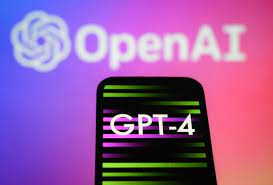Artificial intelligence has witnessed remarkable advancements in recent years, and ChatGPT has been at the forefront of revolutionizing conversational AI. With each iteration, from GPT-3 to GPT-4 and beyond, ChatGPT has continued to push the boundaries of language understanding and generation. We will explore the evolution of ChatGPT, highlighting the key advancements and the potential implications for the future of AI-powered conversations.
GPT-3: Unleashing the Power of Language
GPT-3, the third-generation language model, marked a significant milestone in the development of ChatGPT. With an impressive 175 billion parameters, GPT-3 demonstrated unprecedented language understanding and generation capabilities. It showcased the ability to engage in coherent conversations, provide accurate responses, and even generate creative content, revolutionizing the way we interact with AI-powered chatbots.
Enhanced Language Understanding
One of the primary focuses of the evolution from GPT-3 to GPT-4 is further improving language understanding. GPT-4 aims to better grasp context, nuances, and complex queries. This enhanced understanding enables ChatGPT to provide more accurate and contextually relevant responses, making conversations feel more natural and human-like.
Improved Response Coherence
Building on the foundation of GPT-3, GPT-4 aims to address challenges related to response coherence. While GPT-3 occasionally generated nonsensical or irrelevant responses, GPT-4 strives to enhance coherence by considering broader context and maintaining a more consistent dialogue flow. This advancement ensures that interactions with ChatGPT feel more seamless and coherent, enhancing the user experience.
Ethical and Responsible AI
As AI technology evolves, so does the focus on ethical considerations. With each iteration, including GPT-4, efforts are being made to address biases, promote fairness, and ensure responsible AI usage. ChatGPT models are being fine-tuned to provide unbiased and culturally sensitive responses, avoiding misinformation or promoting harmful content. The aim is to foster trust and accountability in AI systems.
Continued Training and Expansion
ChatGPT’s evolution goes beyond a single version upgrade. Ongoing training and expansion of the model’s dataset contribute to its continuous improvement. By incorporating more diverse and representative data, GPT-4 can enhance its understanding of various topics, domains, and languages, making ChatGPT more versatile and capable of catering to a wide range of user needs.
The Future of ChatGPT
While the specifics of GPT-4 and future iterations are yet to be fully unveiled, the future of ChatGPT holds immense promise. Advancements in language models, increased computational power, and ongoing research will pave the way for even more powerful and sophisticated conversational AI. We can expect ChatGPT to continue transforming various industries, from customer support and education to content creation and beyond.
The evolution of ChatGPT from GPT-3 to GPT-4 and beyond signifies the remarkable progress made in the field of conversational AI. With each iteration, ChatGPT demonstrates enhanced language understanding, improved response coherence, and a commitment to ethical and responsible AI practices. As we look to the future, the potential for ChatGPT to revolutionize human-AI interactions and drive innovation across industries is both exciting and promising. Stay tuned as the journey of ChatGPT continues to unfold, shaping the future of AI-powered conversations.
Book Scott Today
Book Scott to keynote at your next event!
Managing Partner at Astor Perkins, TEDx, Top Global Innovation Keynote Speaker, Forbes, Singularity University, SXSW, IBM Futurist, Tribeca Disruptor Foundation Fellow, National Sloan Fellow, Wiley Author, TechCrunch, Winner of Innovation Awards.


















